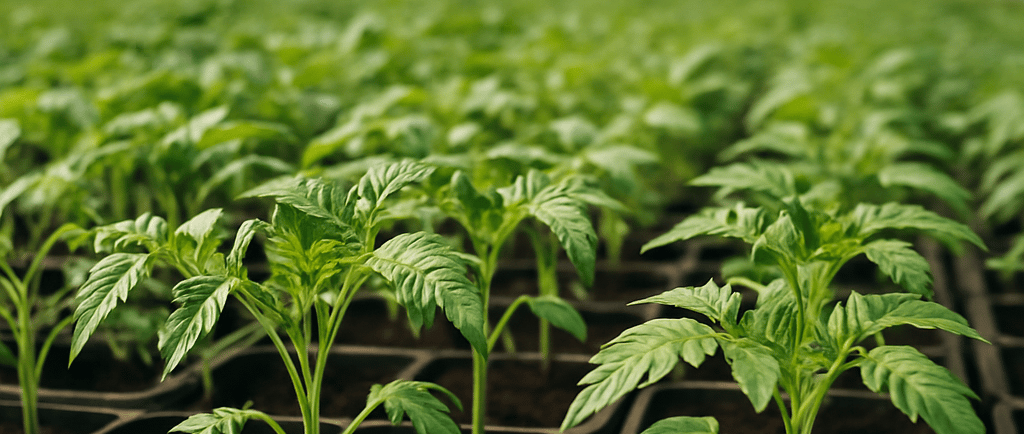Tomato Seedling Production: Advantages of Artificial Light Plant Factories over Traditional Greenhouse
TOMATO
7/29/20252 min read


A scientific study on SAOPOLO tomato seedlings cultivated in an artificial light plant factory demonstrates several key benefits from applying LED lighting with adjusted spectra, compared to traditional greenhouse cultivation.
The research carefully compared tomato seedling growth, survival, energy consumption, and fruit outcomes between an LED-controlled environment and a semi-enclosed greenhouse setting.
Key Insights from the Study
Energy Efficiency: LED plant factories consumed significantly less electricity—greenhouse resource use was 220% to 281% higher than in the LED-driven environment over the two-month seedling period. This includes power for temperature and humidity control, and lighting itself.
Seedling Growth and Survival: Tomato seedlings under artificial LED lighting grew slightly slower before grafting but showed accelerated growth post-grafting, matching greenhouse plants within 16 days. Crucially, seedling mortality was lower (4.3% versus 6.5%), indicating improved robustness from LED treatments.
Lighting Spectrum Optimization: Red and blue LEDs are key for photosynthetic efficiency. A red:blue ratio of 8:2 enhanced lateral branch growth and stem diameter compared to natural light in the greenhouse.
Fruit Yield and Quality: Upon transplanting tomato seedlings into greenhouses for fruiting, no significant differences in final fruit weight or quality were observed between the LED-grown seedlings and greenhouse-grown ones, confirming no compromise on crop marketability.
How Spectrum Adjustment Works
Adjusting the red-to-blue light balance can influence morphology—such as plant height, leaf size, and stem thickness—and improve photosynthetic performance.
This study highlights the practical advantage of a higher red to blue ratio (8:2) for tomato seedlings in controlled environments, encouraging vigorous stem and branch growth while maintaining leaf health.
Implications for Growers
Cost Savings: Lower energy consumption in LED plant factories may reduce operational costs.
Improved Plant survival: Higher survival rates during the vulnerable seedling stage reduce losses.
Flexibility: Spectrum adjustment through LEDs offers growers the ability to optimize light recipes for each crop stage, potentially enhancing growth speed and uniformity.
Future Integration: Intelligent lighting systems equipped with sensors and data-driven controls can dynamically adjust light spectrum and intensity to changing plant needs and external conditions, maximizing yield and resource efficiency.
Source
Zou et al. (2025). “Comparative study of artificial light plant factories and greenhouse seedlings of SAOPOLO tomato”
PLOS ONE, 5 March 2025
